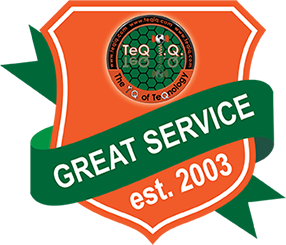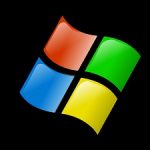
"Share this Info and Help a Friend"

AD: We want to be your Phone and Technology Provider!
We Just Launched a New Mobile and Desk Phone Service.
No More Need for Multiple Mobile Phones or Apps with Multiple Numbers!
Now Have your Personal and Business Mobile Phone Numbers to Make Calls/SMS/MMS and Call Recording on your Mobile Phone/Computer/Desk Phone.
"You have Nothing to Lose But your Higher Bill"
https://www.teqiq.com/phone
For years, Nvidia’s H100 GPUs have been the undisputed kings of the AI jungle, the apex predators that every competitor wants to dethrone.
But here in Silicon Valley — where I’m writing this and where a good underdog story is always appreciated, AMD is roaring onto the scene with its Instinct MI300 series and the upcoming MI350 series, demonstrating not just competitive prowess but a significant, open-source-driven lead in key AI training and inference workloads.
In a world where cutting-edge hardware is harder to get than a unicorn on a skateboard, AMD’s strategy of being not just “good enough” but demonstrably superior, particularly in performance-per-dollar, is a true game-changer.
Let’s chat about AMD’s Advancing AI 2025 event this week, and we’ll close with my Product of the Week, the new Eight Sleep Pod 5, which could end the war over the thermostat between spouses forever.
Unleashing Raw Power: AMD’s MLPerf Dominance
AMD’s recent debut in the MLPerf Training v5.0 benchmarks wasn’t just an entry; it was a thunderclap. This critical benchmark for AI training, focusing on real-world workloads such as fine-tuning a variant of the Llama 2 70B model using LoRA (Low-Rank Adaptation), revealed that AMD’s Instinct MI325X platform outperformed six OEM submissions using Nvidia’s H200 platform by up to 8%, according to MLPerf Training v5.0.
Let that sink in: AMD, the perennial challenger, just demonstrated a lead over Nvidia’s latest in a head-to-head, real-world AI training scenario. The AMD Instinct MI300X platforms also delivered competitive performance compared to the Nvidia H100 on the same workload, proving that both AMD GPU platforms in the Instinct MI300 Series are potent solutions for diverse training needs.
That performance edge isn’t just theory; it’s independently verified proof that AMD isn’t just playing; it’s winning.
OEM Results Confirm AMD Reproducibility
What makes this even more compelling is the widespread validation from AMD’s partners. Six OEM ecosystem partners, including giants like Dell, Oracle, Gigabyte, and QCT, submitted their own MLPerf Training results using AMD Instinct MI300 Series GPUs.
That third-party participation isn’t just AMD showing off its shiny toys; it’s an industry-wide affirmation that AMD Instinct performance can be consistently reproduced across various OEM platforms. Supermicro even broke new ground by becoming the first company to submit liquid-cooled AMD Instinct results to MLPerf, achieving a time-to-train score of 21.75 minutes with an Instinct MI325X platform, highlighting the thermal efficiency and scaling potential of advanced cooling solutions.
MangoBoost further raised the bar with the first-ever multi-node training submission powered by AMD Instinct GPUs, showcasing significant scalability with 2-node (16-GPU MI300X) setups completing training in 16.32 minutes and 4-node (32-GPU MI300X) configurations in just 10.92 minutes. These results are a testament to the maturity, flexibility, and openness of the AMD Instinct ecosystem.
Open-Source Secret Sauce: ROCm’s Rapid Evolution
At the heart of AMD’s accelerating performance is the rapid evolution of AMD ROCm, its open-source software stack.
ROCm isn’t just a side project; it’s receiving relentless developer-focused progress, with software updates rolling out every two weeks. ROCm 7, previewed for August 12, promises out-of-the-box compatibility, local execution on Windows and Linux, and significant performance uplifts — up to 3.5 times performance and 3 times training speed on the same hardware compared to prior ROCm versions.
This open-source advantage allows AMD to iterate and innovate at a pace that Nvidia’s proprietary CUDA ecosystem simply cannot match. While CUDA kernels often need to be rewritten for each new Nvidia GPU generation (you can’t just use an H100 kernel for Blackwell, for instance), ROCm’s open nature facilitates far quicker adaptation and broader compatibility.
This rapid pace of software advancement, coupled with deeper ecosystem collaboration, is demonstrably contributing to ROCm 7 running 30% faster than Nvidia’s CUDA in key inference benchmarks, according to AMD internal testing.
Beyond raw speed, ROCm 7 introduces advanced AI capabilities, including text-to-text, text-to-image, support for European language models, agent platforms, and multimodal processing — delivering up to three times the performance of ROCm 6 in inference and training workloads.
ROCm 7 delivers up to 3.5x performance over ROCm 6 across popular inference workloads.
This leap is driven in part by a re-engineered token generation pipeline that shifts from a bottlenecked, centralized inference model to a more efficient distributed approach using prefill, caching, and focused decoding.
MI350, MI400 Roadmap Raises the Stakes
AMD’s annual hardware cadence is delivering continuous generational leaps.
The upcoming MI350 series promises even faster inference and training, supporting larger AI models with up to 288GB of memory per GPU. According to AMD, the MI355X will deliver up to 4.2 times the performance of the previous-generation MI300X and significantly outperform Nvidia’s B200 and GB200 in specific inference workloads.
In crucial DeepSeek and Llama workloads, AMD projects these new products will outperform Nvidia by 20% to 30% and offer up to 40% more tokens per dollar, based on internal benchmark testing. For training, the MI350 series delivers up to 3.5 times the performance of prior hardware, and it matches or outperforms Nvidia by 30% in pre-training workloads, even against Nvidia’s latest reported numbers.
Looking further ahead, the MI400 “Vulkan” product family is scheduled for release in 2026, promising a holistic design for leadership performance and supporting up to 300 GB of scale-out bandwidth, delivering up to 10 times the performance of the MI355X, based on engineering projections for the upcoming MI400 series. The MI500 is slated for 2027, showing AMD’s aggressive, long-term roadmap.
This relentless pace of innovation, with leadership performance designed in, is a serious threat to Nvidia’s established market dominance.
AMD’s Full-Stack Approach
AMD isn’t just building chips; it’s building entire AI ecosystems.
The AMD Helios AI rack reference platform, previewed for 2026, integrates 5th Gen EPYC CPUs, Instinct GPUs, Pensando DPUs, and ROCm, promising 50% more memory capacity, bandwidth, and scale-out bandwidth, which delivers significant economic benefits for customers. This double-wide rack design is predominantly liquid-cooled, a testament to AMD’s long-standing leadership in liquid cooling and its recognition of the cost-of-ownership benefits.
Networking is another critical differentiator.
Recognizing that model sizes are growing by three orders of magnitude every three years (while silicon doubles every two years), distributed computing and advanced networking are crucial to closing the performance gap.
AMD’s solution is the open-source Ultra-Ethernet effort and the Ultra-Accelerator Link. Its Pensando Pollara 400 AI NIC, now in full release, offers a 40% performance advantage over competing technology, up to 20 times the performance of InfiniBand in specific workloads, according to AMD.
This programmable NIC enables customers to create custom networking protocols, significantly enhancing throughput by eliminating bottlenecks through advanced load balancing. The strategic partnerships around Pollara, including those with major server and networking vendors, are already yielding results, with Oracle reporting a 5 times performance increase in its AI deployments using MI355 GPUs.
Juniper Networks is also collaborating with AMD on 800 GB switches, leveraging Pollara NICs to network massive numbers of both AMD and Nvidia GPUs, massively outperforming InfiniBand. This comprehensive, open approach to networking, in contrast to Nvidia’s more proprietary offerings, further enhances AMD’s value proposition for large-scale AI deployments.
Wrapping Up: The Open AI Future Is AMD’s Game To Win
AMD’s AI momentum is undeniable. Its MLPerf Training debut showcases competitive and, in several key benchmarks, superior performance compared to Nvidia’s H100 and H200.
AMD’s recent performance gains are fueled by its relentless, open-source ROCm software stack, which is evolving at an unprecedented pace, and a strong, diverse ecosystem of partners. With the upcoming MI350 and MI400 series promising generational leaps in performance and scalability, coupled with a comprehensive rack-scale and networking strategy built on open standards, AMD is positioning itself as a formidable leader in the AI race.
Nvidia’s reliance on a proprietary ecosystem is looking increasingly like a liability in a market clamoring for flexibility, cost-effectiveness, and rapid innovation. The future of AI is open and accelerated, and right now, AMD, not Nvidia, is driving that future.
If this tip helps and you would like to donate click on the button. Thanks In Advance.
________________________________________________________________________________________________________
"Fortune Favors, Who Value Time over Money!"
"TeQ I.Q. was the 1st IT Company to Deliver Cloud Solutions since 2003"
Tech issues taking up your Time?
"TeQ I.Q. Makes Your Technology Secure and Protected"
Do you have Tech Frustrations like your Computer, Internet, Phone, Cellphone, Camera, TV, Car?
"We Take Away Your Tech Frustrations and Give You the Free Time You Deserve!"
Call Robert to ask all your Technology questions.
For Free Consultation Call Now Robert Black at (619) 255-4180 or visit our website https://www.teqiq.com/
Chase Bank and Others Trust TeQ I.Q. with their IT and TeQnology so can you!



